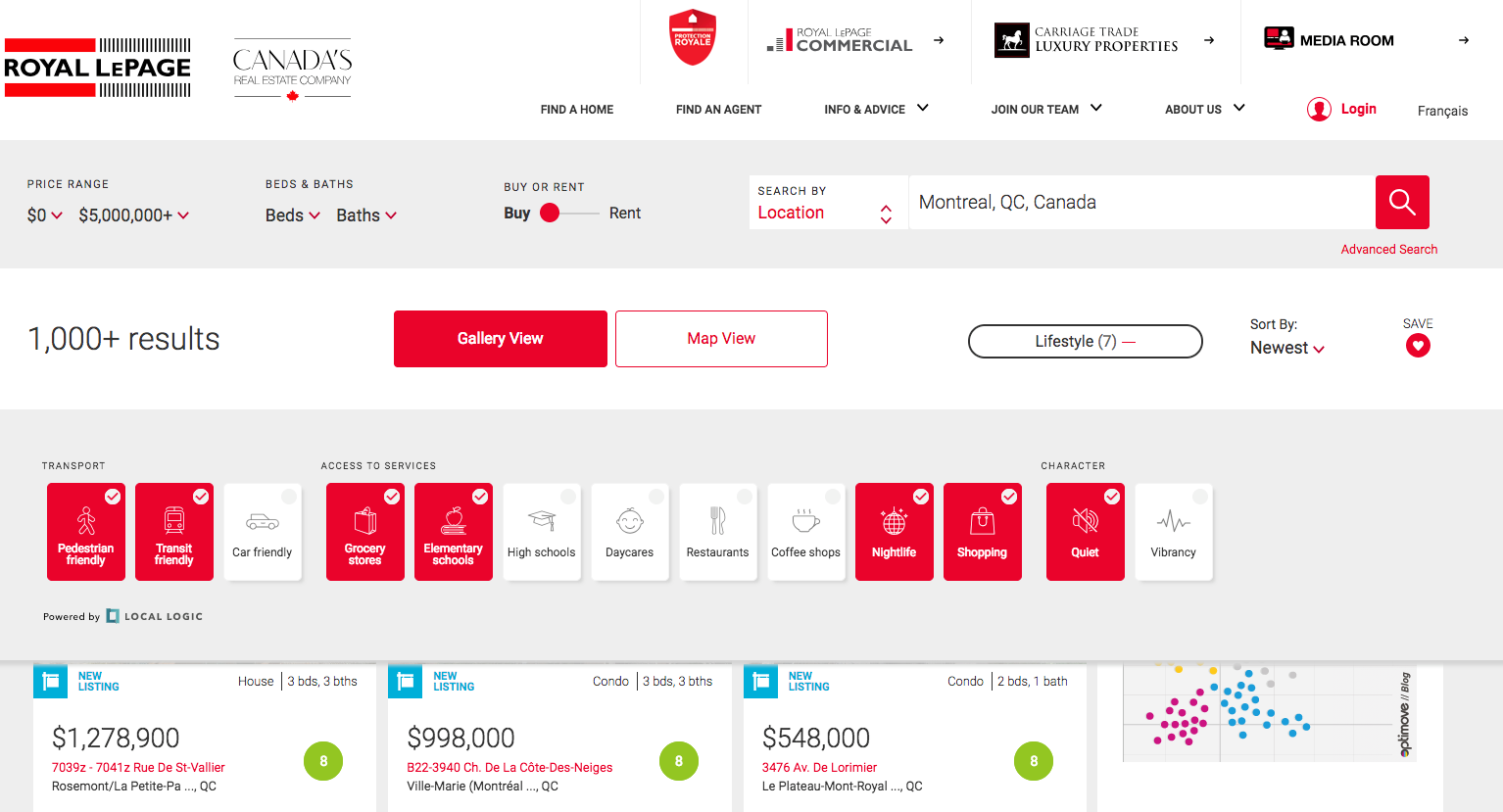In today’s fast-paced digital world, buyers have come to expect a highly customized level of service in a short period of time—often without picking up the phone or talking one-on-one with another person. While that may work well for discovering a new local restaurant or specifying which toppings you want on your delivery pizza, the real estate industry has made little progress to meet the growing expectations of modern consumers…until now.
Currently, the vast majority of real estate websites offer a similar experience—one that relies on superficial details like general location, number of bedrooms and budgetary guidelines to aggregate a list of properties. The trouble is, there’s a whole lot more that goes into a major buying decision like homeownership than square footage, walk-in closets or the number of zeros behind a dollar sign.
What if your buyer wants a quiet spot, but loves coffee? What if they want to be near grocery stores? Buyers want both their house and their neighborhood to suit their individual lifestyle and needs.
The fact of the matter is, if your site isn’t offering the information that shoppers are after, they have no choice but to go elsewhere—reducing your conversion rates and ultimately driving leads away from your platform, into the arms of the world wide web (and your competitors).
By implementing lifestyle data into your listings, we have found that buyers are likely to convert three times faster, increasing overall conversion rates by an average of 36 percent. By not taking factors like noise level, public transportation, schools and nearby restaurants into consideration, potential buyers are forced to do their own research—sifting through potentially hundreds of ultimately ill-fitting listings to find options that meet their exact preferences.
Luckily, the rise of affordable computing power and artificial intelligence has made quantifying personal preferences possible. Today, we can seamlessly process billions of data points to better understand and inform buyers on the atmosphere or “feel” of any given neighborhood.
For example, let’s say a young family with two kids are looking for a quiet neighborhood, but close to parks and within their chosen school zone. In this scenario, we’d cross-reference nearby traffic and flight patterns to gauge noise, map proximity to local parks and keep suggestions located within their preferred education district.
The result? Better quality leads, higher conversion rates, and happier homebuyers.
Our proprietary Lifestyle Match analyzes popular search criteria and assigns a 1-10 score to properties, based on the individual homebuyer’s input. This way, top matches are showcased, allowing shoppers to spend less time searching and more time falling in love with their new homes.

The lifestyle match in action on the Royal LePage website
Leading real estate brokerage Royal LePage implemented this technology and quickly saw a drastic rise in click-throughs on properties with high location scores, leading to increased conversion rates and maximized efficiency for all parties involved.
It’s the agent’s job to help clients find their dream homes while alleviating stress and delivering a great experience. With artificial intelligence on your side, it’s never been faster, simpler or more cost-effective to do just that.
For more information on how we can help you turn listings data into faster deals, please visit www.locallogic.co. To learn more about our solutions in action, read our Royal LePage case study here.
For the latest real estate news and trends, bookmark RISMedia.com.




